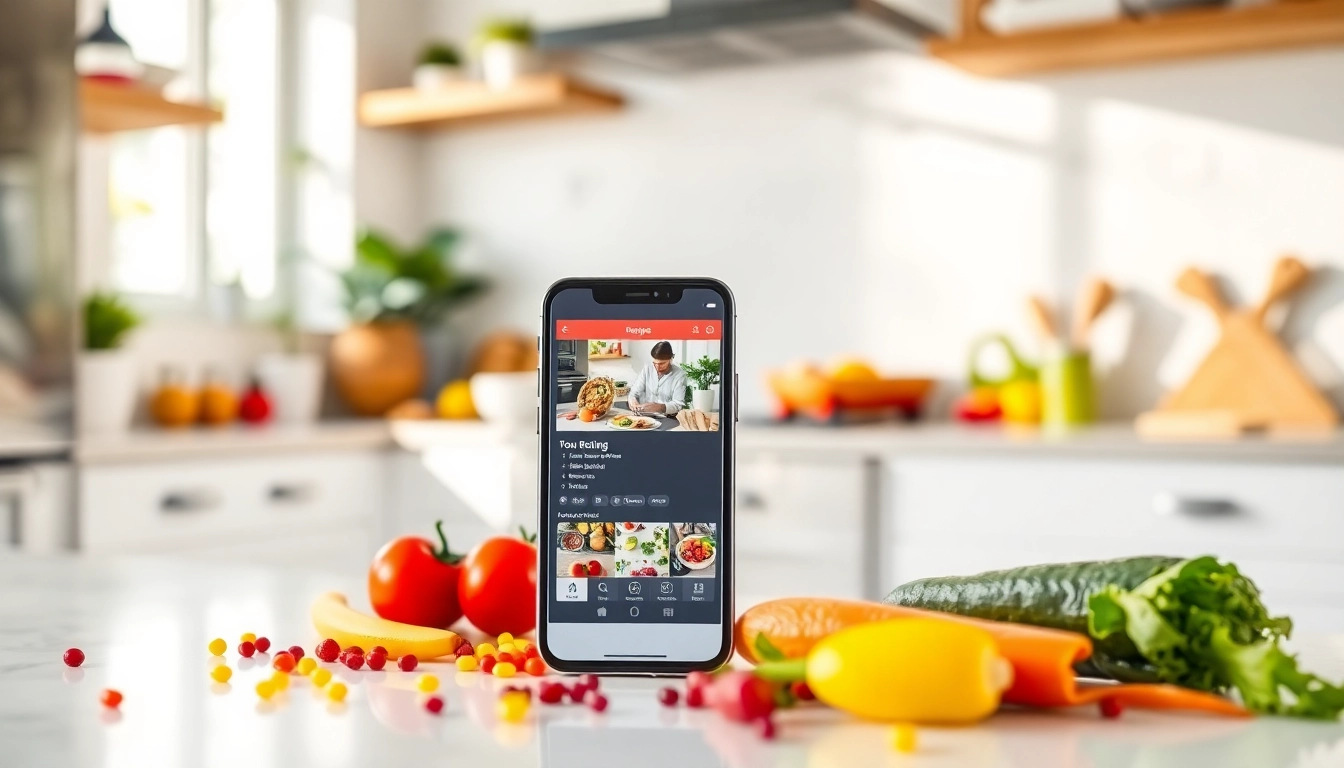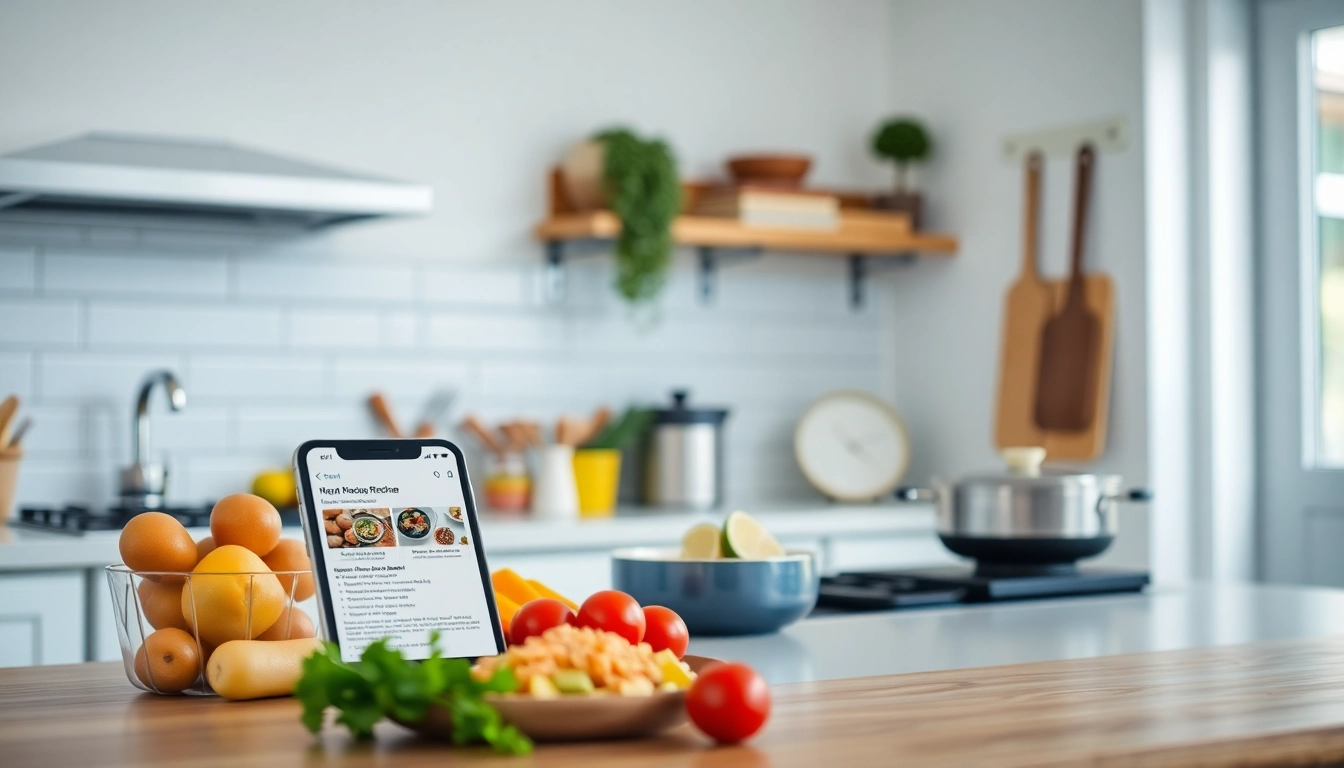Understanding the Importance of Custom Recipe Management
In the culinary world, recipes are more than just instructions; they are personalized expressions of taste, tradition, and innovation. With the proliferation of digital tools, managing your recipes has evolved from simple handwritten notes to complex, customizable digital collections. Embracing a system that allows you to save recipes my way is crucial for any home cook or professional chef looking to streamline their culinary workflow, preserve their culinary creativity, and access their favorite dishes effortlessly.
Why does personalizing your recipe storage matter? The answer lies in the diversity of culinary sources, dietary preferences, and cooking styles. No two cooks are alike, and neither should their recipe management systems be. A tailored approach ensures that your collection reflects your unique palate, accommodates modifications, and adapts to your evolving cooking repertoire.
This comprehensive guide explores the critical role of custom recipe management, examines the challenges faced in saving recipes, and provides actionable strategies to help you create a personalized, efficient, and inspiring digital recipe collection.
Strategies to Save Recipes My Way
Choosing the Right App for Your Needs
The first step in personalizing your recipe management is selecting an app or platform that aligns with your specific needs. With countless options—from basic note-taking tools to advanced recipe organizers—it’s essential to evaluate features such as ease of use, compatibility across devices, ability to import from various sources, and customization capabilities.
For instance, if you frequently save recipes from social media platforms like Instagram or TikTok, look for apps such as Flavorish that can import recipes directly from these sources. If you prefer offline access and powerful organization features, apps like Recipe Keeper or RecipeSage offer robust offline storage, tagging, and sharing options.
Assess your culinary workflow—do you need a simple solution to jot down quick recipes, or do you require a sophisticated system with meal planning, shopping lists, and analytics? Making an informed choice helps you build a repository that grows with your cooking style and minimizes frustration.
Organizing Recipes for Easy Access
Organization is the backbone of an efficient recipe management system. A well-structured collection allows you to retrieve recipes instantly, adapt them easily, and keep your culinary pursuits enjoyable rather than overwhelming.
Implement categories such as cuisine type, dietary restrictions, meal occasions, or ingredient-based tags. For example, grouping recipes under “Vegetarian,” “Weeknight Dinners,” or “Desserts” helps streamline meal prep. Use color-coded labels or icons for quick visual cues and consider creating folders or collections for themed recipes or seasonal dishes.
Digital tools often support customizable tags and search filters. Regularly reviewing and updating your organizational scheme ensures your collection remains relevant and accessible. For example, removing outdated or unused recipes prevents clutter and maintains focus on your favorites.
Integrating Social Media and Online Sources
In today’s connected world, recipes often originate from social media, blogs, and cooking videos. Seamless integration of these sources into your digital collection is pivotal for a personalized approach. Tools like Flavorish or RecipeSage can import recipes via URLs or by capturing screenshots and notes, enabling a frictionless collection process.
Most apps now support browser extensions or mobile functionalities that allow you to save recipes directly from websites or social media posts. For example, when you discover a compelling recipe on Instagram Reel, capturing it into your collection should be straightforward.
Furthermore, consider importing recipes from handwritten notes, cookbooks, or printed media by scanning or manually entering data. The goal is to consolidate all sources into one cohesive, customizable library that reflects your cooking interests and habits.
Practical Tips for Effective Recipe Saving
Capturing Recipes from Websites and Apps
Efficient recipe capturing involves using tools and techniques that preserve the integrity and details of the original recipe. Browser extensions like Pocket, Evernote, or dedicated recipe apps allow you to clip pages, extract ingredients and instructions, and save images for visual reference.
When saving recipes, focus on capturing essential details: ingredients, quantities, step-by-step instructions, notes on substitutions, and cooking times. Adding tags during the saving process enhances searchability later. For instance, tagging a recipe as “Gluten-Free” or “Vegan” helps retrieve it quickly based on dietary needs.
Integrate your saved recipes with your digital calendar or meal planning tools for a cohesive experience. Advanced apps even allow import from multiple sources simultaneously, reducing manual entry efforts.
Adding Personal Notes and Modifications
Personalization deepens your connection to your recipes. Always include notes on modifications, ingredient substitutions, or favorite adjustments. For example, you might note that you prefer to replace sugar with honey or that you like adding extra garlic for flavor.
Some apps support annotations directly within the recipe card, enabling you to rank recipes, suggest improvements, or record outcomes of each cooking attempt. Maintaining a running commentary over time helps refine recipes to suit your taste and dietary preferences.
Creating Custom Digital Cookbooks
As your collection grows, consider organizing your recipes into themed digital cookbooks. These can be logical groupings—such as holiday menus, quick weeknight dinners, or family favorites. Many apps facilitate creating personalized cookbooks, which can be exported as PDFs, shared with loved ones, or accessed across devices.
Custom cookbooks serve as curated collections, making seasonal planning or special occasions effortless. When browsing through your digital collection, you’ll appreciate the ability to filter by tags, meal type, or dietary restrictions, ensuring seamless inspiration.
Optimizing Your Recipe Collection for Quick Inspiration
Tagging and Categorizing Recipes
Beyond basic organization, tagging provides granular control over your collection. Use descriptive tags like “High Protein,” “Low Carb,” or “One-Pot” to instantly locate recipes fitting specific criteria.
Implement a consistent tagging system—e.g., always use lowercase and drop redundancies—to make advanced searches effective. Regularly review tags to eliminate duplicates and refine your search parameters.
Setting Up Meal Plans and Shopping Lists
Transforming saved recipes into actionable plans is key to efficient cooking. Many apps integrate meal planning with shopping list creation, so selecting recipes for the week automatically generates a shopping cart with ingredients organized by aisle or store layout.
This functionality minimizes grocery store stress, reduces food waste, and ensures you have all necessary ingredients on hand. Plan meals based on your schedule, dietary goals, or ingredient availability, then let your app handle the logistics.
Sharing Your Recipes with Family and Friends
An often overlooked benefit of customized recipe management is easy sharing. Export curated cookbooks, send individual recipes, or generate shopping lists to collaborate on meal prep with others.
Digital sharing options include direct app-to-app transfer, email, or cloud links. Sharing enhances communal cooking experiences, encourages family involvement, and simplifies recipe exchanges across households.
Measuring Success and Improving Your System
Tracking Recipes You Bake Often
Monitoring your most-frequented recipes helps identify favorites and areas for experimentation. Use analytics features in your chosen app to see baking frequency, ratings, and modifications over time.
This data supports smarter meal planning, keeps your collection dynamic, and motivates you to explore new dishes while maintaining your trusted staples.
Updating and Clearing Out Old Recipes
Periodically review your collection to remove outdated or unused recipes. Keeping your library streamlined prevents clutter and preserves your motivation to cook from your curated archives.
Update recipes with new variations or improved techniques, ensuring your collection evolves alongside your culinary skills.
Using Analytics to Refine Your Collection
Advanced recipe management apps provide insights into cooking habits, ingredient preferences, and meal timing. Leverage this data to tailor your culinary routine, optimize shopping lists, and discover new cuisines aligned with your tastes.
Analytics also highlight gaps—such as missing protein sources or missing dessert options—prompting you to diversify your recipes consciously.



